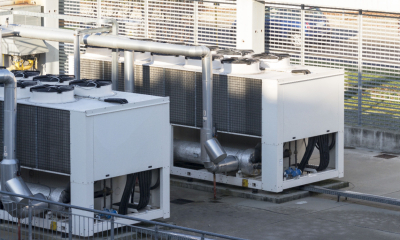HELPING SMALL BUSINESSES SUCCEED
MORE DONUTS:
What do you need to know about small business tax, funding and finance?
Get the finance you need to start or grow your business and sources of start-up finance.
Also in this topic
Create a budget, manage your cash flow and costs and comply with statutory accounting requirements.
Also in this topic
Banking options and requirements for small businesses - bank accounts, credit cards and mortgages.
Also in this topic
Insurance advice for small businesses. From identifying the insurance coverage you need to how to minimise risks and make an insurance claim.
Also in this topic
Tax rates, thresholds and filing requirements including VAT, NI, CGT, property taxes and capital gains.
Also in this topic
Money blog
Latest blogs
Fintech software development agencies’ role in financial services
Date: 28 April 2025
By: Redhead Digital Agency
The future of small business finance: embracing digital evolution
Date: 23 April 2025
By: Soprano
Show blogs by topic:
Five reasons your business fleet needs modern turbochargers
Keep your business fleet operating at peak performance with modern turbochargers and reduce costs, downtime and improve efficiency.
Date: 4 April 2025 By: Lucy Hawthron
How regular chiller maintenance can save you money
When equipment breaks down, the costs can go far beyond the costs of the repair. Here’s how regular chiller maintenance can save you time, money and help maintain your reputation for reliability.
Date: 4 April 2025 By: Alexander York
Buying gold and silver for a stronger investment portfolio
For investors looking for safe investment opportunities, gold and silver have always provided a safe haven. Here’s why you should consider adding gold and silver to your portfolio.
Date: 4 April 2025 By: Rachel McAllister
Transforming your financial management with AI
AI-powered tools can streamline financial management for small businesses by automating tasks, improving cash flow, enhancing forecasting, and managing risk - boosting efficiency and decision-making.
Date: 31 March 2025 By: AI21
Bank statement PDF to Excel: Analyse and optimise your finances
Learn five secure methods to convert bank statement PDFs to Excel for easier analysis, from using software to AI tools, and ensure data security for better financial management.
Date: 27 March 2025 By: Cisdem
Avoid common mistakes when choosing accounts receivable software
Accounts Receivable (AR) software can improve the efficiency of your AR team and boost cash flow and customer satisfaction. Avoid these common mistakes when choosing AR software.
Date: 20 March 2025 By: HighRadius
Why file your self assessment tax return in April?
Why file your self assessment tax return early when you know the deadline is not for months? There are several compelling reasons which we explore in this blog.
Date: 18 March 2025 By: Mike Parkes, GoSimpleTax
The overlooked details that make or break your business
In business, it’s often the little details that can have the biggest impact on a company's efficiency, reputation, and bottom line. Here’s why the small things matter.
Date: 17 March 2025 By: Guest post
Scaling customer support without increasing overheads
Customers expect a speedy resolution to their queries and to be able to contact you via their preferred medium. So how can small firms scale their customer support without increasing their overheads?
Date: 5 March 2025 By: Redhead Digital Agency
Key considerations for investing whilst living abroad
Working abroad can present some great opportunities for new experiences but it can also offer access to some investment options that might not be available back home.
Date: 25 February 2025 By: James Rayburn
Leveraging fintech and understanding IBANs
Modern businesses require modern solutions. IBAN and fintech are two such areas that businesses with global ambitions need to understand and adopt.
Date: 25 February 2025 By: Soprano
Top seven employee scheduling apps
Discover our top seven employee scheduling apps to help businesses streamline their business operations and workforce management in 2025.
Date: 25 February 2025 By: Soprano
VAT management for UK SMEs: streamlining digital payments
Complying with VAT rules is essential. Making Tax Digital has digitised the process but small businesses still need to record and file the correct information using compliant software and tools.
Date: 21 February 2025 By: Guest post
Sash window draft proofing and the 0% VAT scheme
Discover how the UK government’s 0% VAT scheme for energy-saving measures can help you cut your VAT bill and energy costs.
Date: 18 February 2025 By: Victoria Iurieva, Chameleon Decorators
MTD for ITSA is coming
Making Tax Digital for Income Tax Self Assessment (MTD for ITSA) will finally begin its rollout from April 2026. Discover what it means for you and when you will need to comply.
Date: 31 January 2025 By: Mike Parkes, GoSimpleTax
How to secure online communications with clients
Securing your online client communications is essential. Discover an eight-step plan for keeping communications and client data safe.
Date: 17 January 2025 By: Mahendra Kumawat
How to file a UK self assessment as an expat
If you’re an expat Brit, you might be wondering whether you need to complete a self assessment tax return and pay UK tax on your UK earnings. Here’s what you need to know.
Date: 13 January 2025 By: Mike Parkes, GoSimpleTax
What does the * mean?
If a link has a * this means it is an affiliate link. To find out more, see our FAQs.



















